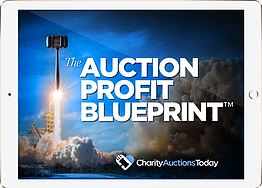DOWNLOAD The Auction Profit Blueprint
The 4 tools BIG organizations use every time to skyrocket auction profits!
The Step-By-Step Guide to stop leaving thousands on the table.
Learn why nonprofit voice and tone are important. CharityAuctionsToday can help formalize your organization’s brand tone and voice to strengthen your communications.

In the world of nonprofit organizations, the way you communicate can be just as crucial as the work you do. The tone and voice of your nonprofit are key components of your brand, and they play a significant role in how your message is received by donors, volunteers, and the communities you serve. This article will delve into the importance of nonprofit tone and voice and provide insights on how to cultivate a brand messaging strategy that resonates with your audience and amplifies your mission.
Before we dive into the reasons why tone and voice are indispensable, let’s clarify what we mean by these marketing terms. Simply put, voice is what you say and tone is how you say it.
The voice is the consistent personality of your nonprofit expressed through communication. Unlike tone, which can shift, your voice should be stable and recognizable across all platforms. It’s the unique way you convey your message that makes your organization identifiable, relatable, and memorable.
A brand in a very traditional field like finance or medicine, for example, will strive to craft a voice that instills trust. In practical terms, this might mean using certain words and phrases and avoiding others. A very traditional brand might shy away from using contractions in their communications, or other casual grammatical details.
The tone of your nonprofit refers to the emotional inflection behind your communication. It’s how you express your brand’s personality in written or spoken words. The tone can vary depending on the context and the audience, but it should always align with your organization’s values and the impact you aim to make.
Take our example from the previous section: a more traditional brand might want to come across as trustworthy, authoritative, but approachable. They’ll avoid being overly familiar, casual, or funny, depending on the audience and medium. Brands can usually showcase a sense of humor on social media, for example, but their blog, emails, and other channels will stay more formal.

by Jason Rosewell, Unsplash
Nonprofits might not be selling products, but they are certainly promoting causes, ideas, and actions. Here’s why getting the tone and voice right is critical.
People support nonprofits they trust. By using a voice and tone that are true to your brand and mission, you create a sense of reliability and authenticity. Consistent messaging helps to build trust with your audience, which is essential for sustaining long-term relationships with supporters.
Imagine a social media account for a cause you care about: it’s clear from the style and tone that more than one person is posting. Sometimes you aren’t sure they’re saying the same thing about important details like events or impact. Do you want to give them your money?
The issues nonprofits address often involve evoking empathy and compassion. The right tone can create an emotional connection with your audience, making them more likely to engage with your cause.
Your mind might go automatically to ads with sad animals, but there are a lot of ways to connect with people. Empathy and compassion of course, but also, when appropriate, humor and optimism can be powerful too.
In a sea of organizations vying for attention and support, a distinctive voice helps your nonprofit stand out. It’s an integral part of your brand identity and helps you to be heard above the noise.
A compelling voice and appropriate tone can inspire people to take action. Whether it’s donating, volunteering, or spreading the word, the way you communicate can motivate your audience to get involved.

Volodymyr Proskurovskyi, Unsplash
Now that we’ve established the importance, let’s explore how to effectively define and use your nonprofit’s voice and tone.
Take a look at your existing communications. Do they reflect the personality and values of your organization? Are they consistent across various channels? An audit of your current messaging can help identify what’s working and what needs to be refined.
Think of your nonprofit as a person. What characteristics define you? Are you compassionate, authoritative, optimistic, or perhaps a mix of these? Your organization’s personality will guide the development of your tone and voice.
Try this exercise: What are three words that describe your organization? What are three words that do not?
We know the second question is tougher: try not to go for easy adjectives like “negative” or “uptight.” Think about your competitors: do you want to sound and feel different than they do in their communications? If so, try to define how.
If you don’t exactly have direct competitors or similar nonprofits to compare yourselves to, think of brands or organizations that you want to emulate or definitely don’t want to emulate.
Different audiences may require different tones. Consider the preferences and expectations of your donors, volunteers, and beneficiaries when crafting your messages. A deep understanding of your audience ensures that your tone and voice are not only consistent but also resonate with those you’re trying to reach.
A style guide is an essential tool for maintaining consistency. It should outline your voice characteristics and provide examples of how your tone might shift for different types of content or audiences. This document will serve as a reference for everyone in your organization to ensure cohesive communication.
A brand style guide is a great place to get specific. Lay out which style guide you organization should use (AP vs Chicago Style, for instance). If there are versions of your brand name or programs that you don’t want to see in print (acronyms, capitalizations, or lack thereof) list them here. If there are specific industry terms you do or do not want to use, list them in your brand guidelines.
Style guidelines make it easy for you to onboard any new employees or partners. They can take a look and immediately understand your nonprofit’s tone, voice, grammar preferences, and even design stipulations.

Head shot close up focused businessman listening to young african american employee. Millennial biracial male job applicant presenting himself on interview with confident hr manager at office.
With a clear understanding of your tone and voice, the next step is to put them into practice.
Ensure that every member of your team understands the importance of tone and voice. Regular training sessions can help staff and volunteers become effective brand ambassadors when communicating on behalf of the nonprofit.
From social media posts to fundraising letters, your tone and voice should be evident. Consistency helps strengthen your brand and reinforces your message across all touchpoints.
While your voice remains consistent, your tone may need to adapt depending on the platform. The tone you use in a grant proposal might be more formal than the tone you use on social media, for example.
Regularly assess the effectiveness of your communications. Are they engaging your audience and conveying your message as intended? Be open to evolving your tone and voice to better align with your audience’s needs and expectations.
Nonprofit tone and voice are not just elements of branding—they are powerful tools that can influence perceptions, drive engagement, and ultimately support the achievement of your mission. By thoughtfully crafting your tone and voice and implementing them consistently, you can strengthen your nonprofit’s presence and make a deeper impact with your communication efforts.
Remember, your tone and voice are the heart and soul of your nonprofit’s messaging. They are the means through which you connect with your audience on an emotional level and inspire action. Use them wisely, and watch as your nonprofit’s influence and reach grow.
DOWNLOAD The Auction Profit Blueprint
The 4 tools BIG organizations use every time to skyrocket auction profits!
The Step-By-Step Guide to stop leaving thousands on the table.

